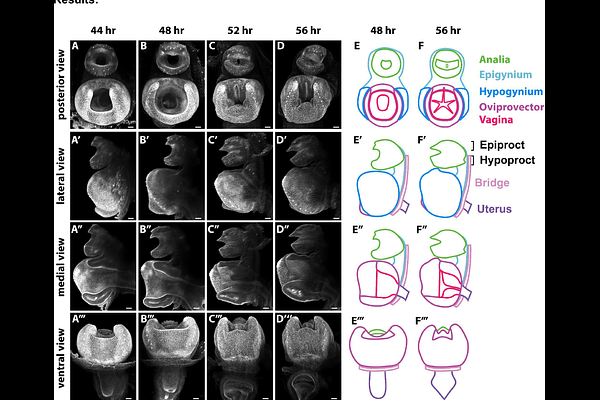Parallels in the Regulatory Landscape of Dimorphic Female and Male Genital Structures in Drosophila melanogaster

Parallels in the Regulatory Landscape of Dimorphic Female and Male Genital Structures in Drosophila melanogaster
McQueen, E.; Rice, G.; Pillai, S.; Saleh Ziabari, O.; Vincent, B. J.; Rebeiz, M.
AbstractUnderstanding how morphological structures evolve via changes to their development is an ongoing pursuit in biology. Comparative approaches examine changes in the expression or function of key developmental molecules (e.g. transcription factors, signaling molecules or cellular effectors) within homologous structures, and correlate these changes with structural divergence across species, populations, the sexes, or even between different body parts within individuals. The female and male genitalia of Drosophila offer an excellent opportunity to investigate homology and trait evolution, as fruit fly genital structures are developmentally tractable and evolve rapidly. While previous work has characterized gene regulatory networks operating in the development and evolution of male genital structures in Drosophila, female pupal genitalia are comparatively understudied. Here, we traced the development of female pupal genitalia to determine when and how individual structures form. We then measured the expression patterns of 29 transcription factors in both female and male genital structures at high resolution using the hybridization chain reaction and confocal microscopy. We found that these transcription factors are highly patterned in both sexes, and some serve as marker genes for distinct genital structures in females. Our results suggest that the same transcription factors may control developmental processes in female and male genitalia, and this data enables future studies that interrogate how developmental gene regulatory networks specialize and evolve in both sexes.